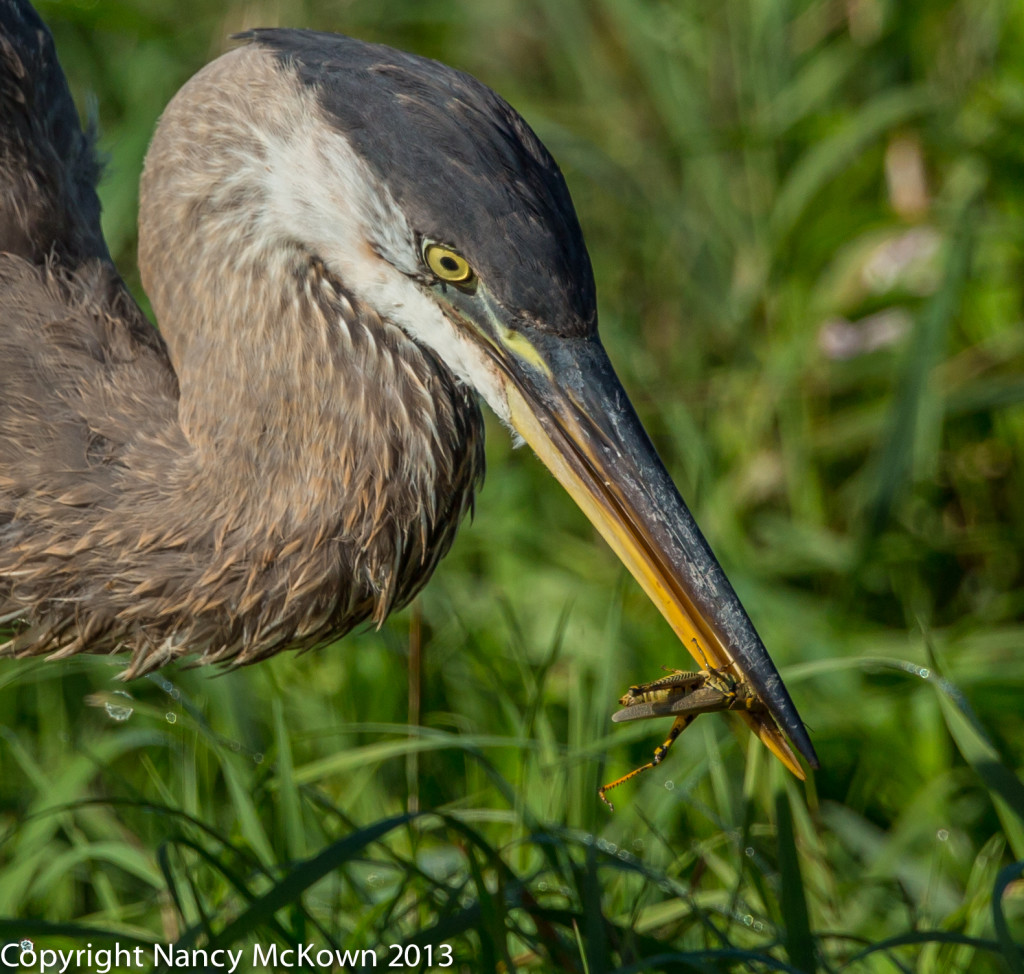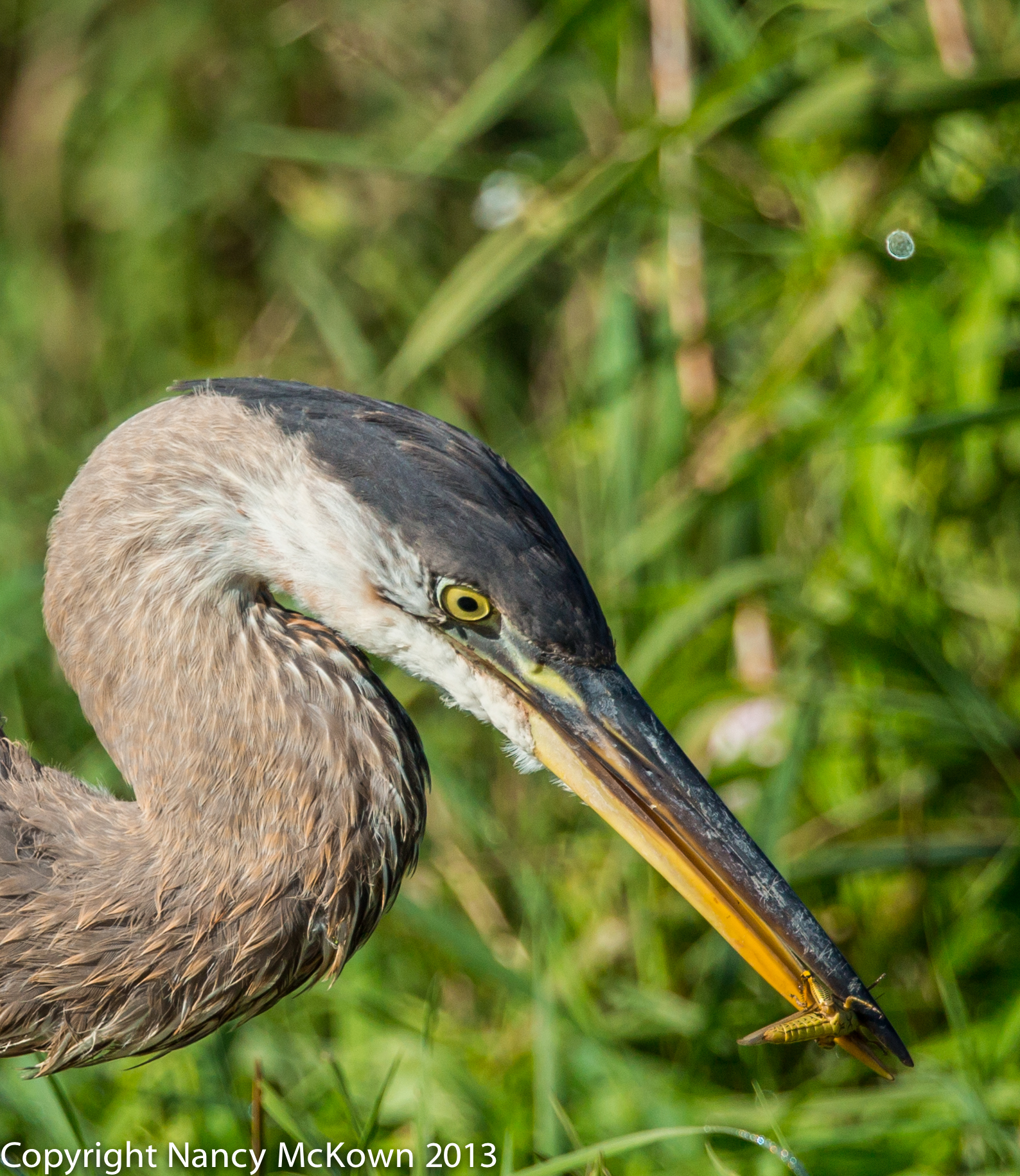A Great Blue Heron Out of Its Element
We were driving on the backroads in Allegan County searching for birds in the corn fields when we came across a very large bird that was not only out of its natural element, but strangely unafraid of moving cars and humans.
The Great Blue Heron is a long legged, wading bird usually found near water. Its long neck and sharp beak make it highly adept at fishing.
We came across this heron on a very dry looking country road. He was “fishing” for insects in the rows of corn.
When A Bird Lets You Come Close With Your Camera
The strange part about this particular bird was that we were not only able to move in very close, but we were also able to get in and out of the car as needed. The heron was not about to come meet us, but he definitely wasn’t fearful and did not attempt to fly off. We were able to get so close that the 300 mm lens with 2x extender (600mm) was too long to get the entire bird in the view finder.
Instead of removing the 2x extender and using the 300mm focal length, I decided to leave it on and take advantage of the sharp, close-up possibilities that a telephoto lens can provide.

f/6.3, 1/2500 second, ISO 640. 300 mm lens with 2x extender.
Macro Lenses Not Preferable for Bird Photography
I owned a Canon EF 100mm f/2.8L IS lens with macro. I used the macro for flowers and insects, but it never worked for photographing birds. I ended up selling it.
Even though macro lenses will let you capture incredible, close up detail, I found that it was not practical to use a macro lens in bird photography because it requires that you get as close as 2 inches away from a bird. When does that happen?
Telephoto Lenses Work Well for Close-Up Photography
If you want close-up photos of a bird, or bird parts, you can use your telephoto lens. This is especially true if you and your lens are able to get close enough to the bird to capture the details.

Zooming In With Post-Processing Software
Close proximity to your subject is essential to get the tack sharp details. The less zooming you need to do in post processing, the clearer the close-up details will be.
Post processing software will help you to zoom in on any portion of a photo. As I wrote in my post labeled “How to Photograph a Great Blue Heron – Part 1”, digital images are made out of pixels/dots. You enlarge the dots when you zoom in to a relatively small component of the photo. The more you zoom in on a detail in the photo, the larger the dots become. As the pixels/dots enlarge, the image becomes less clear.
Photo Details
I like the long beak in the first photo. It’s all scuffed up; as if this crane has been in a lot of sword fights. And, of course, the details seen in the close-up of the poor, doomed grasshopper trapped in that razor sharp beak is fascinating. I would not have seen that detail if I was not able to get as close with my long lens.
So when a bird allows you to get close, take advantage of your long telephoto lens and focus in on details that interest you.










What a great find Nancy! I like that blue heron quite a bit.